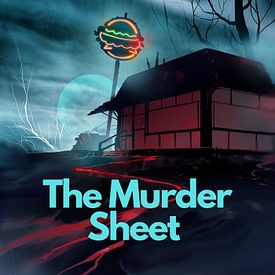This episode was originally published on The Murder Sheet's main feed on November 22, 2024.
The Cheat Sheet is The Murder Sheet's segment breaking down weekly news and updates in some of the murder cases we cover. In this episode, we'll talk about cases from Indiana, New York, California, and Florida.
Follow the case of Sheila Agee, the woman accused of helping her son Keith Agee find and murder Brooklyn Sims, at the Pensacola News Journal: https://www.pnj.com/
Follow the case of Sheila Agee, the woman accused of helping her son Keith Agee find and murder Brooklyn Sims, at WKRG: https://www.wkrg.com/
Follow the case of Sheila Agee, the woman accused of helping her son Keith Agee find and murder Brooklyn Sims, at MYNBC15: https://mynbc15.com/
Follow the case of Sheila Agee, the woman accused of helping her son Keith Agee find and murder Brooklyn Sims, at WEAR TV: https://weartv.com/
The Westchester Journal News on the news around Jairo Castillo in the case of Julio Lebron: https://www.lohud.com/story/news/crime/2024/11/21/nys-top-court-overturns-jairo-castillo-murder-conviction-over-self-defense-claim/76476273007/
ABC 7 on Hannah Kobayashi's disappearance: https://abc7.com/post/hannah-kobayashi-family-missing-hawaii-woman-holding-rally-downtown-los-angeles-call-search-volunteers/15568549/
If you have information on Hannah's case, call the Los Angeles Police Department at (877) 527-3247.
Join our Patreon here! https://www.patreon.com/c/murdersheet
Support The Murder Sheet by buying a t-shirt here: https://www.murdersheetshop.com/
Send tips to murdersheet@gmail.com.
The Murder Sheet is a production of Mystery Sheet LLC.
See Privacy Policy at https://art19.com/privacy and California Privacy Notice at https://art19.com/privacy#do-not-sell-my-info.


